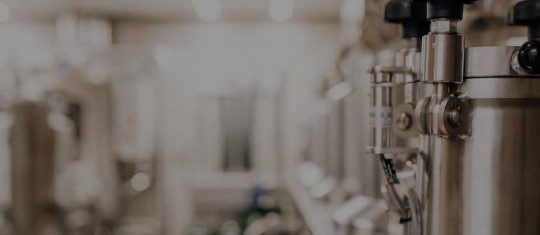"Hop creep", or also the "diastatic power of hops", are terms that have become increasingly important recently because of the rising popularity of New England India Pale Ales (NEIPA), juicy and hazy beers, and also includes increasing dry hopping of classic beer styles. As dry hopping establishes itself as a process step in breweries, and the average amount of hops per dry hopping also increases, this phenomenon is increasingly jeopardizing brewing results. But brewers can take remedial action and put an end to the initial shock of hop creek. Science and the Brewing Solutions team at BarthHaas are aby your side.
What is hop creep?
Hop creep is an additional fermentation in dry hopped beers initiated by amylolytic, i.e. starch-degrading, enzymes from the hops. These enzymes break down unfermentable dextrins into short-chain oligosaccharides such as maltotriose, maltose and glucose. While the yeast does not know what to do with long-chain dextrins, it is able to ferment glucose and maltose.
During secondary fermentation, the yeast cells remaining in the young beer convert these sugars into alcohol, CO2 and secondary metabolites, which are mostly undesirable fermentation intermediates. The term "hop creep" was coined by American craft brewers, since it is a hidden, slow process that causes unpleasant surprises for brewers. The phenomenon has now become the subject of research. However, it was first documented as early as 1893 by the authors Brown and Morris in the English publication The Brewers Guardian.
The range of effects extends from an increase in alcohol content and carbonation to changes in the taste such as reduced residual sweetness, lower body and altered mouthfeel. In the worst case, hop creep can even have legal consequences because product safety (exploding bottles) may not be guaranteed. Also, the alcohol content shown on the label may not correspond to the actual alcohol content of the dry hopped beer. What can sometimes have a more dramatic effect than an increased degree of fermentation is the formation of so-called metabolites such as diacetyl - an off-flavor that unpleasantly alters the taste of beer.
What influences the diastatic power of hops are such well-known factors as crop variability, processing form and hop variety. Some varieties have higher diastatic power than others, according to a study by Oregon State University. Kilning also plays a role: the higher the kilning temperature, the lower the enzyme activity. Overall, however, the extent of diastatic forces is unpredictable as variations can occur from lot to lot.
How to calculate Hop Creep?
In order to be able to control the creeping dextrin degradation from secondary fermentation and integrate it into the brewing process, scientists Arnbjørn Stokholm, Lindsey N. Rubottom and Thomas H. Shellhammer from Oregon State University have developed a method for practical application in the brewery. Their study was published in the November/December 2020 issue of the journal Brewing Science. In it, following the ASBC method, they performed ASBC Wort-5 rapid fermentations with and without dry hopping at a benchtop scale and compared the results to full-scale fermentations using the same wort, yeast and hops.
This enabled them to check the relevance of the lab results and determine the degree of correlation. In each case, the residual extract and the apparent degree of fermentation were measured in the laboratory after 48 and 72 hours. In fact, the results from the rapid fermentation in the laboratory allowed conclusions to be drawn about the hop creep effect on a large scale. The correlation was greatest when measured after 72 hours.
This method is particularly suitable for breweries that already have a laboratory and can complete a small-scale fermentation ahead of the production fermentation in order to calculate dextrin degradation. The method can be reproduced as follows: 500 ml of the wort is fermented with yeast under constant stirring at 20 degrees Celsius. After 48 and after 72 hours, residual extract and apparent degree of fermentation are measured, respectively. An additional five grams of hops are added to a second 500 ml sample. The worts are fermented and measured in the same way. The results make it possible to calculate dextrin degradation on a large scale.
How can you avoid hop creep?
We now know that the hop creep enzymes come from the plant material of the cones. The less plant material a brewer uses, the lower the amylolytic activity. Thus, it becomes clear why T90 pellets have a stronger enzyme effect than enriched T45 pellets. Brewers who add flavor extracts, such as the free-flowing and fully soluble Spectrum to the cold process are virtually safe from common hop creep.
However, brewers can also achieve a lot with the right time of addition: hop creep occurs especially when hops are added after primary fermentation. When the enzymes from the hops are active after primary fermentation, a few yeast cells are in the beer to ferment it, but not enough to break down the resulting diacetyl again.
Therefore, the Brewing Solutions team at BarthHaas recommends adding hops only at the end of primary fermentation, for example, when the residual extract is at 5 degrees Plato. Any diacetyl that develops can then be broken down at the diacetyl rest, i.e., in the two- to four-day warm holding period. Outside of the German Purity Law, it is also possible to degrade diacetyl by using an exogeneous enzyme called decarboxylase, which canbe added as a last resort when nothing else can be saved.
Reference: „Evaluating a benchtop fermentation method for estimating dextrin degradation by hop diastatic enzymes during dry-hopping”, A. Stokholm, L. N. Rubottom, T. H. Shellhammer, Brewing Science November/December 2020 (Vol. 73).


